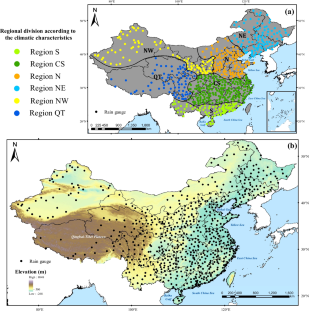Climate Dynamics ( IF 4.6 ) Pub Date : 2024-04-05 , DOI: 10.1007/s00382-024-07188-0 Fuwan Gan , Zheng Wei , Xiang Diao , Xianci Zhong , Yang Gao

|
The actual application of Integrated Multi-Satellite Retrievals for Global Precipitation Measurement (IMERG) is restricted by the bias revealed by ground data. This study established seven regression models (RMs) to generate the adjusted IMERG estimates. Relatively stable parameters of the regression can be gained during the calibration. The calibration was performed by climatological adjustment, building a relationship between the 18-year data series of the original IMERG estimates and simultaneous daily data derived from 687 rain gauges in mainland China. A one-time modeling scheme was designed using all daily precipitation data as a calibration dataset. A two-time modeling scheme was established by dividing the calibration period into cold and warm seasons. Then, the relative bias (RB) and root-mean-square error (RMSE) were the evaluation indicators inspected during the validation. Three rounds of modeling were designed to provide corrections when near-real-time and post-real-time IMERG products produce time series. The main conclusions are as follows: (1) The two-time modeling scheme had a higher proportion than the one-time modeling scheme in having the lowest RMSE and absolute RB values. (2) Compared with the original IMERG estimates, the model-generated estimates in rounds 1 and 2 reduced the magnitude of the RB and RMSE at around 75% and 85% of gauges, respectively. (3) Polynomial RMs were the best-performing models in rounds 2 and 3. (4) The gauges where the RM failed to reduce the magnitude of the RB were mainly found in humid, plain, and low-latitude areas of mainland China.



























 京公网安备 11010802027423号
京公网安备 11010802027423号